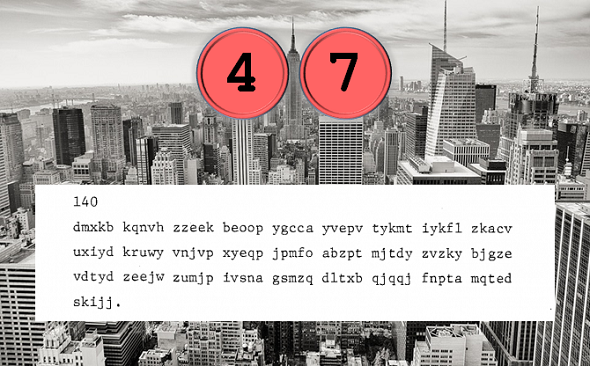140
dmxkb kqnvh zzeek beoop ygcca yvepv tykmt iykfl zkacv
uxiyd kruwy vnjvp xyeqp jpmfo abzpt mjtdy zvzky bjgze
vdtyd zeejw zumjp ivsna gsmzq dltxb qjqqj fnpta mqted
skijj.
229
fpoxa tijyp qrerq znqst zasnk zarvq hhsmw vlhfg pyhqc
yuirf fsgoi twgdg sbphc fkfza bpegh jzujn wtsxp ijamg
tzdto hxzdn uivww tizoc axkye lhmdn sfzjo omrhb zpith
hklsf anvdr ynhqk syrgi ltxos wabom dzwlb byava sjomn
qqszs adddu greao alhon lxzgi iwpnf uzgui jgmya ksqfw
zsjl.
After my first blog article about these cryptograms in 2013 I received many comments. Some readers pointed out that it was not necessarily Köhler himself, who encrypted these messages. Instead, it might have been the sender of the letter. If so, the Abwehr Enigma might have been used for encryption. Maybe an Enigma expert can tell, whether these messages are consistent with an Enigma encryption.
If Köhler himself was the encipherer, it is unlikely that he used an Enigma (an Enigma would have been too expensive and too conspicious). Of course, the One Time Pad is an option (which is bad news, as the One Time Pad is unbeakable of used properly), but I have never heard of a German WW2 spy using this method. Instead, most Nazi spies used manual ciphers. This means that there is a good chance to break the Köhler cryptograms with modern means.
If you know more, please let me know.
Follow @KlausSchmeh
Further reading: A German spy message from World War 2
Linkedin: https://www.linkedin.com/groups/13501820
Facebook: https://www.facebook.com/groups/763282653806483/



Kommentare (33)